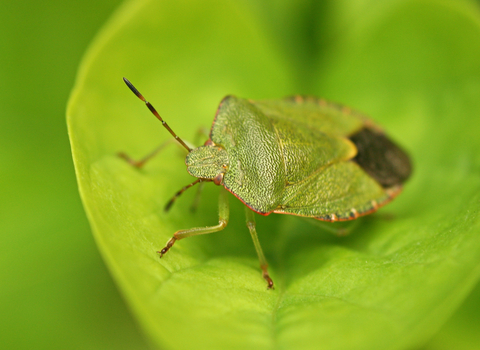
©Rachel Scopes
Common green shieldbug
The common shieldbug was once restricted to Southern England, but has since been moving northwards and is now quite widespread. It can be found in all kinds of habitats from gardens to farms.
Enw gwyddonol
Palomena prasinaPryd i'w gweld
May to NovemberSpecies information
Category
Ystadegau
Length: 1.3cmCommon.
